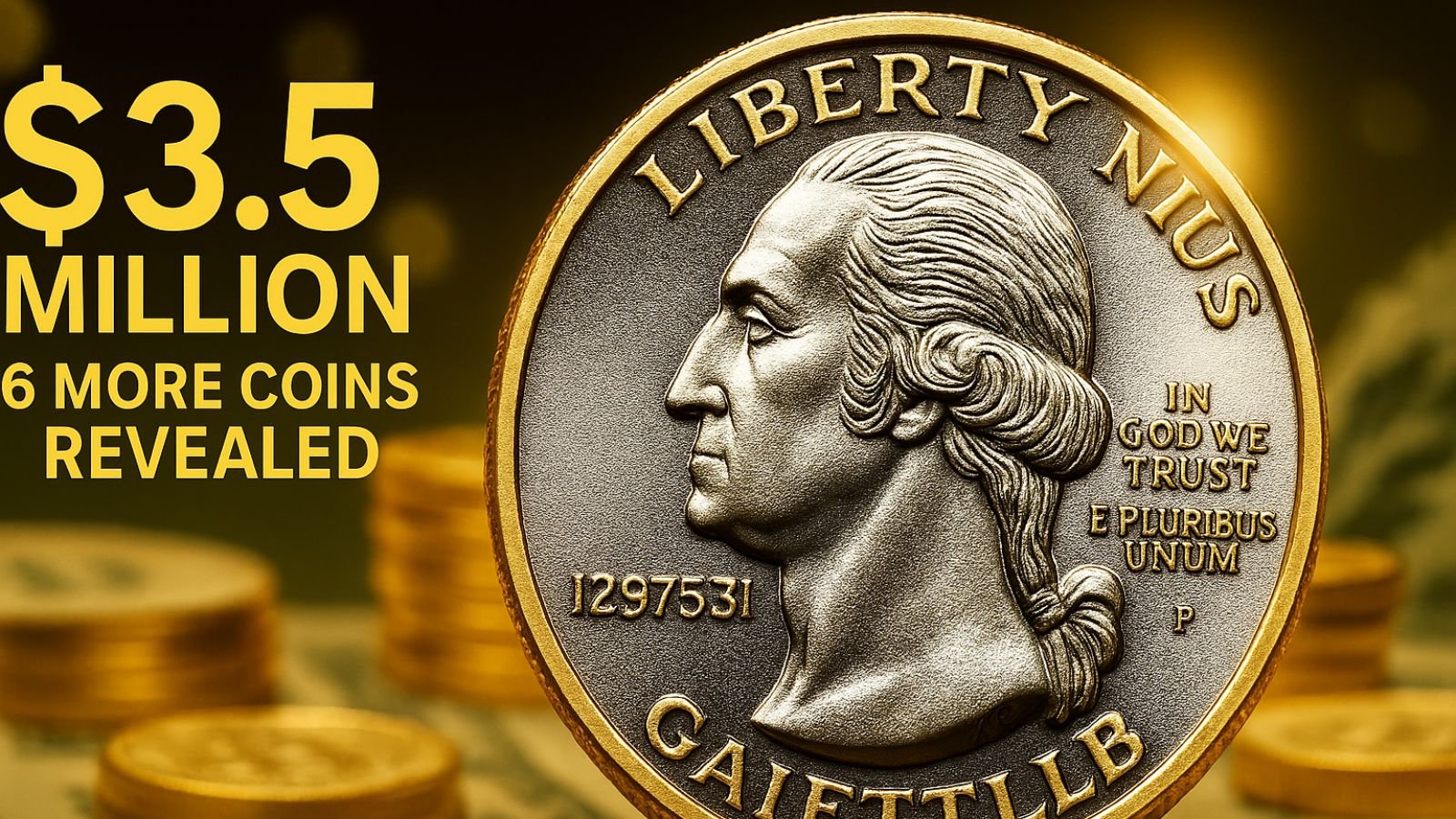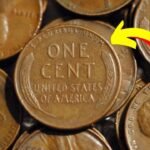If you’ve ever brushed aside your loose change or tossed quarters into a jar without a second glance, you may want to start taking a closer look. Among those ordinary coins could be a piece of hidden history worth more than most people make in a lifetime. That’s not an exaggeration—one rare coin, the $3.5 Million Bicentennial Quarter, has recently captured headlines and the attention of collectors worldwide. Even more astonishing is that there are six additional coins that have each surpassed the $1 million mark in value. Whether you’re an experienced collector or just curious about what might be lurking in your spare change, this guide will walk you through everything you need to know.
The $3.5 Million Bicentennial Quarter: A Hidden Treasure
Among all the coins in American history, the $3.5 Million Bicentennial Quarter stands out not just for its staggering value but also for the mystery and rarity that surrounds it. Minted in 1975–1976 to celebrate the United States’ 200th birthday, most Bicentennial quarters are common and worth no more than face value. However, an incredibly rare few were minted in 40% silver for collector sets—and one of these coins reportedly sold for $3.5 million due to a combination of its condition, silver content, and minting anomaly.
Why This Quarter Is Worth $3.5 Million
The astronomical value of the $3.5 Million Bicentennial Quarter can be traced to a few factors:
- Silver Composition: While regular Bicentennial quarters are copper-nickel clad, some collector versions were struck in 40% silver.
- Rarity in Circulation: These silver quarters were never meant for general use. A small number accidentally entered circulation, making them extremely rare.
- Minting Error or Unique Strike: The most valuable specimen is believed to have a striking error or variation that sets it apart, potentially even a double die or off-metal strike.
- Perfect Condition: The record-breaking coin was also in near-perfect mint state, which significantly amplified its value.
How to Identify a $3.5 Million Bicentennial Quarter
Here’s what to check if you suspect you’ve stumbled upon one:
- Edge Check: Most modern quarters reveal a copper core when viewed from the edge. A true silver coin will have a solid silver edge with no copper strip.
- Weight: A silver Bicentennial quarter weighs slightly more than its copper-nickel counterpart. Use a digital scale for accurate readings.
- Sound: When dropped, silver coins emit a distinctive ring compared to the duller thud of standard coins.
- Condition: The coin’s condition—particularly if it’s uncirculated or graded MS67 and above—is crucial. If you suspect high quality, consider getting it certified by a third-party grading service like PCGS or NGC.
6 More Coins Worth Over $1 Million
While the $3.5 Million Bicentennial Quarter has drawn the most buzz, it’s not the only coin with life-changing value. Below are six other coins that have broken the $1 million threshold.
1. 1901-S Barber Quarter
One of the rarest quarters ever minted, the 1901-S Barber quarter holds immense collector value.
Why It’s Valuable:
- Only 72,664 coins were minted.
- Most were circulated heavily, and only a few remain in decent condition today.
What to Look For:
- Mint Mark: Look for the small “S” on the reverse beneath the eagle’s tail feathers.
- Condition: Coins in Fine or Very Fine condition already command high prices, while uncirculated ones are prized and rare.
2. 1932-D Washington Quarter
The first year of the Washington quarter series introduced two scarce key dates: the 1932-D and 1932-S.
Why It’s Valuable:
- Only 436,800 of the 1932-D quarters were minted.
- Collectors are eager to complete the Washington quarter set, increasing demand.
What to Look For:
- Mint Mark: Look below the eagle on the reverse side for the letter “D.”
- Condition: High-grade examples, particularly MS65 and higher, can fetch more than $100,000—and exceptionally rare ones cross the $1 million mark.
3. 1870-CC Liberty Seated Quarter
The Carson City Mint is famous among collectors, and the 1870-CC Liberty Seated quarter is one of its rarest offerings.
Why It’s Valuable:
- Only 8,340 coins were minted.
- Many were lost or heavily worn, making high-quality examples extremely scarce.
What to Look For:
- Mint Mark: The “CC” mint mark can be found below the eagle.
- Authentication: Given its rarity, professional authentication is a must.
4. 1823/2 Capped Bust Quarter
This is one of the most famous overdate varieties in American coinage.
Why It’s Valuable:
- Minted in limited quantities.
- The overdate “3” was struck over a “2,” a known minting anomaly that fascinates collectors.
What to Look For:
- Date: Inspect the final digit of the year closely. If you can see the remnants of the number “2” beneath the “3,” you may have a valuable rarity.
- Expert Verification: Grading and authentication can significantly boost resale value.
5. 1796 Draped Bust Quarter
This was the very first quarter issued by the United States Mint.
Why It’s Valuable:
- Only 6,146 coins were ever produced.
- Historical significance as the first U.S. quarter and extremely low mintage elevate its value.
What to Look For:
- Design Details: The coin features Lady Liberty on the obverse and a small eagle on the reverse.
- Condition: Given their age, even moderately well-preserved examples can exceed $100,000. Mint-condition versions soar into the millions.
6. 1871-CC Liberty Seated Quarter
Another treasure from the Carson City Mint, the 1871-CC quarter has long been on every serious collector’s wish list.
Why It’s Valuable:
- Only 10,890 were minted.
- Surviving coins are often in poor condition, making top-grade pieces exceptionally rare.
What to Look For:
- Mint Mark: Look for “CC” under the eagle.
- Condition & Authentication: Because fakes exist, getting the coin graded is essential before selling or buying.
Could You Be Holding a Fortune?
So how do you know if you have a coin worth hundreds of thousands—or even millions—like the $3.5 Million Bicentennial Quarter? Start by organizing your coin collection and researching any oddities. Focus especially on:
- Date and Mint Mark
- Material Composition
- Coin Weight
- Surface Condition
- Sound Test for Silver
If any of your coins meet the characteristics described above, consult with a reputable coin dealer or submit it to a professional grading service for verification.
Final Thoughts
The world of coin collecting is full of surprises, and the $3.5 Million Bicentennial Quarter is proof that even a coin as seemingly ordinary as a 25-cent piece can hold massive value. With six other coins surpassing the $1 million mark, it’s not just about luck—it’s about paying attention, educating yourself, and recognizing what others overlook. You never know what treasures are hiding in your pocket change.
FAQs
What makes the $3.5 Million Bicentennial Quarter so valuable?
Its unique combination of silver content, rarity in circulation, pristine condition, and a possible minting error contribute to its incredible value.
How can I check if my Bicentennial quarter is silver?
Check the coin’s edge—if there’s no visible copper stripe and it feels heavier, you might have a silver version.
What is the most valuable U.S. quarter?
As of now, the $3.5 Million Bicentennial Quarter holds the record for the highest known value.
Are all Bicentennial quarters valuable?
No, most are worth face value. Only those with silver content, minting errors, or unique characteristics fetch high prices.
Should I clean my coin before getting it appraised?
Absolutely not. Cleaning a coin can damage its surface and reduce its value significantly. Leave it as is and let a professional handle it.
Some Important Link
| Telegram Group | Click Here |
| WhatsApp Group | Click Here |
| Home Page | Click Here |










